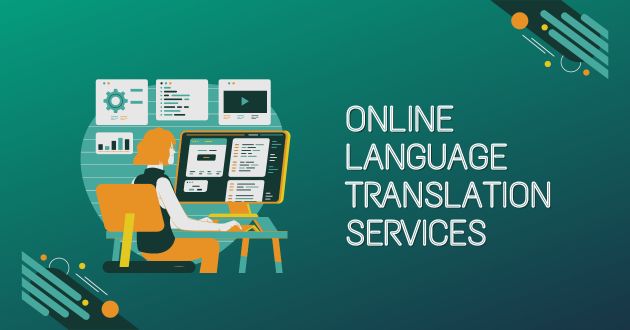Language Translation: Bridging Cultures and Fostering Global Communication
as a paramount tool in breaking down linguistic barriers, fostering cross-cultural understanding, and facilitating effective communication on a global scale. In a world characterized by diverse languages and cultures, translation serves as a bridge, enabling individuals, businesses, and organizations to connect, collaborate, and share information across linguistic boundaries. From literary works and business documents to digital content and international diplomacy, language translation plays a crucial role in shaping a more interconnected and inclusive global community.
The essence of language translation lies in the art of conveying meaning across different languages while preserving the nuances, cultural context, and intended message of the original text. Translators, proficient in both the source and target languages, navigate the complexities of syntax, semantics, and cultural idiosyncrasies to ensure accurate and contextually relevant translations. Whether translating literature, legal documents, technical manuals, or digital content, the goal is to create a seamless and faithful representation of the original message.
Literary translation extends the beauty of storytelling and creative expression across linguistic landscapes. Translators immerse themselves in the intricate worlds crafted by authors, capturing the essence of literary works and bringing them to new audiences. This delicate process involves not only linguistic expertise but also an understanding of cultural nuances, historical contexts, and the author’s unique style. Literary translation enriches global literature by making diverse voices accessible to readers around the world.
In the realm of business and commerce, translation is an essential tool for international trade and collaboration. Companies operating in global markets rely on accurate translation for business documents, contracts, marketing materials, and product information. Multinational corporations navigate the challenges of diverse languages and cultures to ensure clear communication with clients, partners, and stakeholders worldwide. The precision of business translation is crucial for maintaining legal compliance, negotiating contracts, and establishing a strong global presence.
Legal translation requires a specialized skill set due to the precision and specificity of legal language. Legal documents, contracts, and court proceedings demand meticulous translation to preserve the intended legal implications and avoid misinterpretations that could have serious consequences. Legal translators possess expertise not only in language but also in the legal systems of the source and target languages, ensuring accuracy and adherence to legal norms.
Technical translation encompasses a wide range of industries, including science, engineering, medicine, and technology. Technical documents, manuals, and specifications often contain complex terminology and specialized jargon. Technical translators bridge language gaps to make technical information accessible and comprehensible for a global audience. The accuracy of technical translation is paramount in industries where precise instructions and information are critical.
Website and digital content translation are integral in reaching a global online audience. Businesses, websites, and digital platforms localize their content to make it culturally relevant and linguistically engaging for users worldwide. Website translation involves not only textual content but also multimedia elements, user interfaces, and interactive features. This process enhances user experience and extends the reach of digital content to diverse linguistic communities.
Interpreting, a close cousin of translation, involves real-time oral communication between speakers of different languages. Interpreters work in various settings, including conferences, meetings, diplomatic events, and healthcare settings. Simultaneous and consecutive interpreting require quick thinking, linguistic agility, and cultural sensitivity to convey spoken words accurately and maintain the flow of communication between parties who speak different languages.
Machine translation has witnessed significant advancements with the advent of artificial intelligence and neural machine translation. Automated translation tools, such as Google Translate and translation APIs, provide quick and accessible translations for a wide range of content. While machine translation offers efficiency, human expertise remains indispensable for handling nuanced and context-dependent translations that require cultural understanding and linguistic finesse.
Cultural sensitivity is a cornerstone of effective language translation. Translators navigate the cultural nuances embedded in language, considering idioms, cultural references, and social conventions. Cultural awareness ensures that translations resonate authentically with the target audience, avoiding inadvertent misunderstandings or misinterpretations that could arise from cultural differences.
The impact of language translation extends to international diplomacy and political discourse. Diplomats and political leaders rely on skilled translators to convey messages accurately during negotiations, conferences, and international events. The nuances of diplomatic language and the potential implications of translated statements make diplomatic translation a critical component of maintaining positive international relations.
Education and academia benefit from translation in disseminating knowledge across linguistic boundaries. Academic research, publications, and scholarly works are translated to make valuable insights accessible to a global audience. Translating educational materials broadens the reach of educational resources, fostering cross-cultural learning and collaboration among scholars and students worldwide.
Challenges in language translation include the ambiguity of certain terms, linguistic nuances that may not have direct equivalents in another language, and the ever-evolving nature of languages. Translators address these challenges through continuous learning, collaboration, and staying abreast of linguistic developments in both the source and target languages.
The future of language translation holds exciting possibilities, driven by advancements in machine learning, natural language processing, and neural networks. AI-powered translation tools continue to improve in accuracy and efficiency, offering valuable support to human translators. The synergy between human expertise and technological innovation is poised to elevate the field of language translation, making it even more accessible and effective in our interconnected world.
In conclusion, language translation serves as a cornerstone in building bridges of understanding and connection across the diverse linguistic tapestry of our global community. It is a journey marked by linguistic finesse, cultural sensitivity, and the facilitation of meaningful communication that transcends borders. As the world continues to evolve and embrace diversity, language translation remains an indispensable force in fostering mutual understanding and collaboration across languages and cultures.
